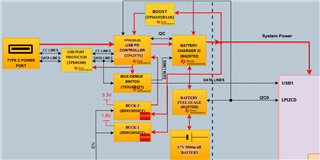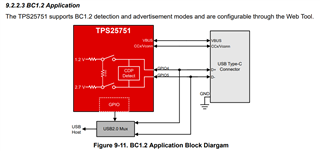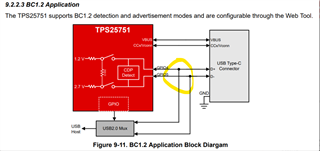Other Parts Discussed in Thread: BQ25792, , TS3USB221A
Tool/software:
In our design we are using the TPS25751 as the PD controller and the BQ25792 as the battery charger IC. Currently, the USB data lines are connected directly to the PD controller, which then routes them through a MUX. This allows the data lines to be split, by default, to the battery charger IC and then to the microprocessor for data transfer. We are uncertain if this configuration is optimal for our design. I have added our architecture—could you please review it to confirm if this design approach is correct?





